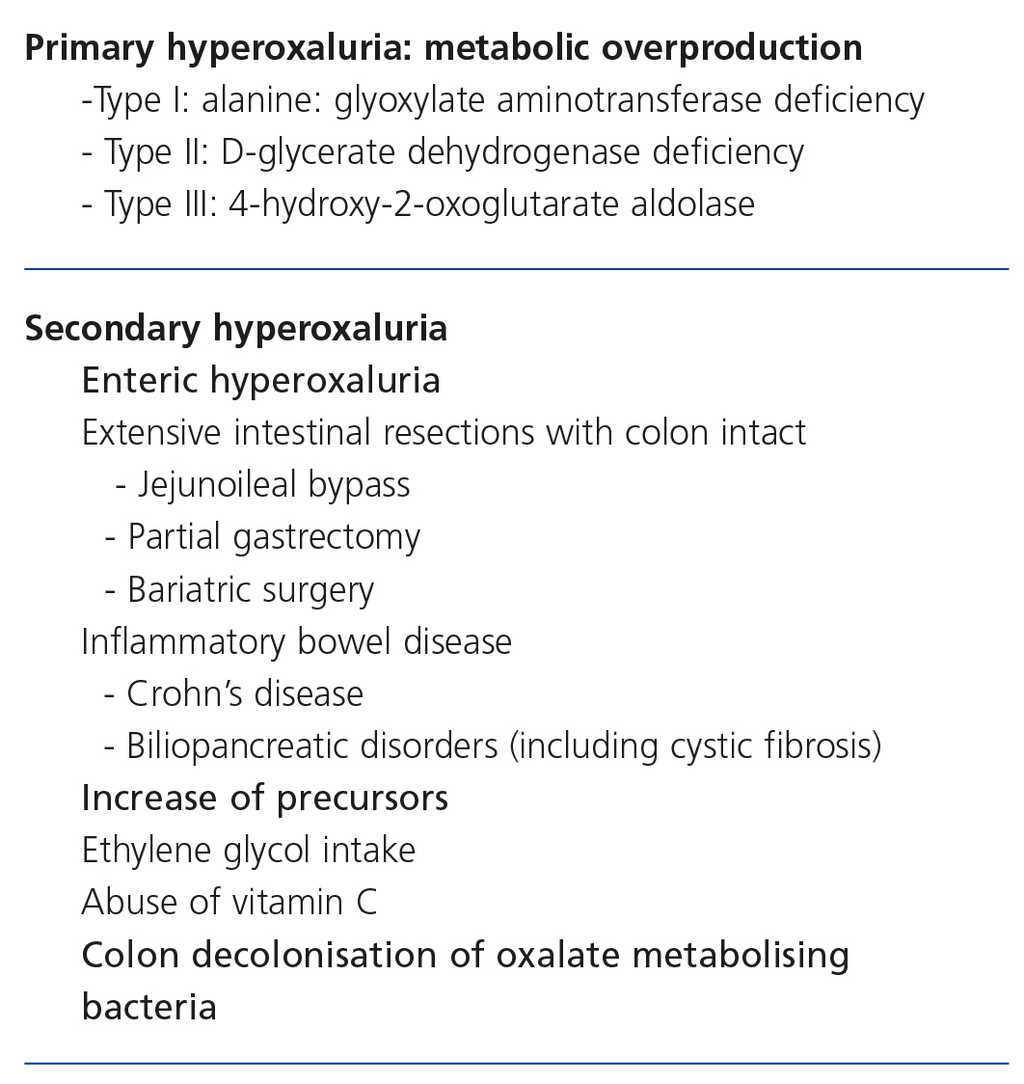Its estimated prevalence in clinical studies is around 13 per million population 1 although recent genomic investigations suggest significant underdiagnosis 2. In addition pyridoxine treatment can be used to normalize or reduce oxalate excretion in about 30 of patients with primary hyperoxaluria type I.
 Patients With Primary Hyperoxaluria Type 2 Have Significant Morbidity And Require Careful Follow Up Sciencedirect
Patients With Primary Hyperoxaluria Type 2 Have Significant Morbidity And Require Careful Follow Up Sciencedirect
Results of Long-Term Treatment With Orthophosphate and Pyridoxine in Patients With Primary Hyperoxaluria.

Primary hyperoxaluria treatment. FDA approval of lumasiran for treatment of primary hyperoxaluria type 1. Indeed genomic studies. Gastrostomy This treatment is involves placing a thin tube into the stomach through the abdomen to.
Affected individuals lack functional levels of a specific enzyme that normally prevents the accumulation of oxalate. A transplanted liver from a healthy donor will make the enzymes your body needs to break down oxalate. Primary hyperoxaluria PH is a group of rare genetic metabolic disorders that are characterized by the accumulation of a substance known as oxalate in the kidneys and other organ systems of the body.
The goal of treatment is to lower the level of oxalate in the body and prevent calcium oxalate crystals from forming in the kidneys and other body tissues. J Med Genet 2014. The main symptoms are related to the precipitation of calcium oxalate crystals in the urinary tract with progressive renal damage and in the most severe form named Primary Hyperoxaluria Type I PH1.
In December 2019 Alnylam Pharmaceuticals announced positive phase III study results for lumasiran an RNAi drug targeting glycolate oxidase in development for primary hyperoxaluria type 1 treatment. Am J Cell Physiol 2004. Primary hyperoxaluria Type 1.
Some common treatments for primary hyperoxaluria include. Baker PRS Cramer SD Kennedy M et al. Behnam JT Williams EL Brink S et al.
The only cure for primary hyperoxaluria type 1 is a liver transplant. Am J Nephrol 2005. There are three main types of PH - PH types I II and III - differentiated by the specific.
Time on dialysis should be short to. Primary hyperoxalurias PHs are rare inherited disorders of liver glyoxylate metabolism characterized by the abnormal production of endogenous oxalate a metabolic end-product that is eliminated by urine. The patient was affected by primary hyperoxaluria type 1 and has undergone a combined liver-kidney transplantation.
Glycolate and glyoxylate metabolism in HepG2 cells. Reconstruction of human hepatocyte. Treatment options for primary hyperoxaluria include alkaline citrate orthophosphate or magnesium.
New directions for treatment. Frishberg Y Zeharia A Lyakhovetsky R et al. Treatment of patients with primary hyperoxaluria with orthophosphate and pyridoxine decreases urinary calcium oxalate crystallization and appears to preserve renal function.
Certain treatments are recommended for primary hyperoxaluria PH and for secondary hyperoxaluria SH. Pathology and Current Treatment Primary hyperoxaluria PH is a rare disease of liver metabolism that results in excess oxalate production and urine excretion hyperoxaluria. Current treatment options include crystal inhibition oxalate reduction kidney stone management dialysis and organ transplant.
Mutations in HAO1 encoding glycolate oxidase cause isolated glycolic aciduria. At the time of the visit he was in treatment with immunosuppressive drugs and received a corticosteroid and an antibiotic therapy monthly. Molecular etiology of primary hyperoxaluria type 1.
Indications for screening and guidance for diagnosis and treatment. Httpswwwfdagovnews-eventspress-announcementsfda-approves-first-drug-treat-rare-metabolic-disorder Accessed on November 24 2020. Definite curative treatment in Primary Hyperoxaluria type 1 patients is combined liverkidney transplantation.
While new therapies are in development for the treatment of primary hyperoxaluria none are currently approved to treat the underlying cause of all known PH subtypes. Two pharmaceuticals in late-stage development may offer new therapeutic options for patients with rare forms of hyperoxaluria. However the role of liver transplantation in patients with Primary Hyperoxaluria.
